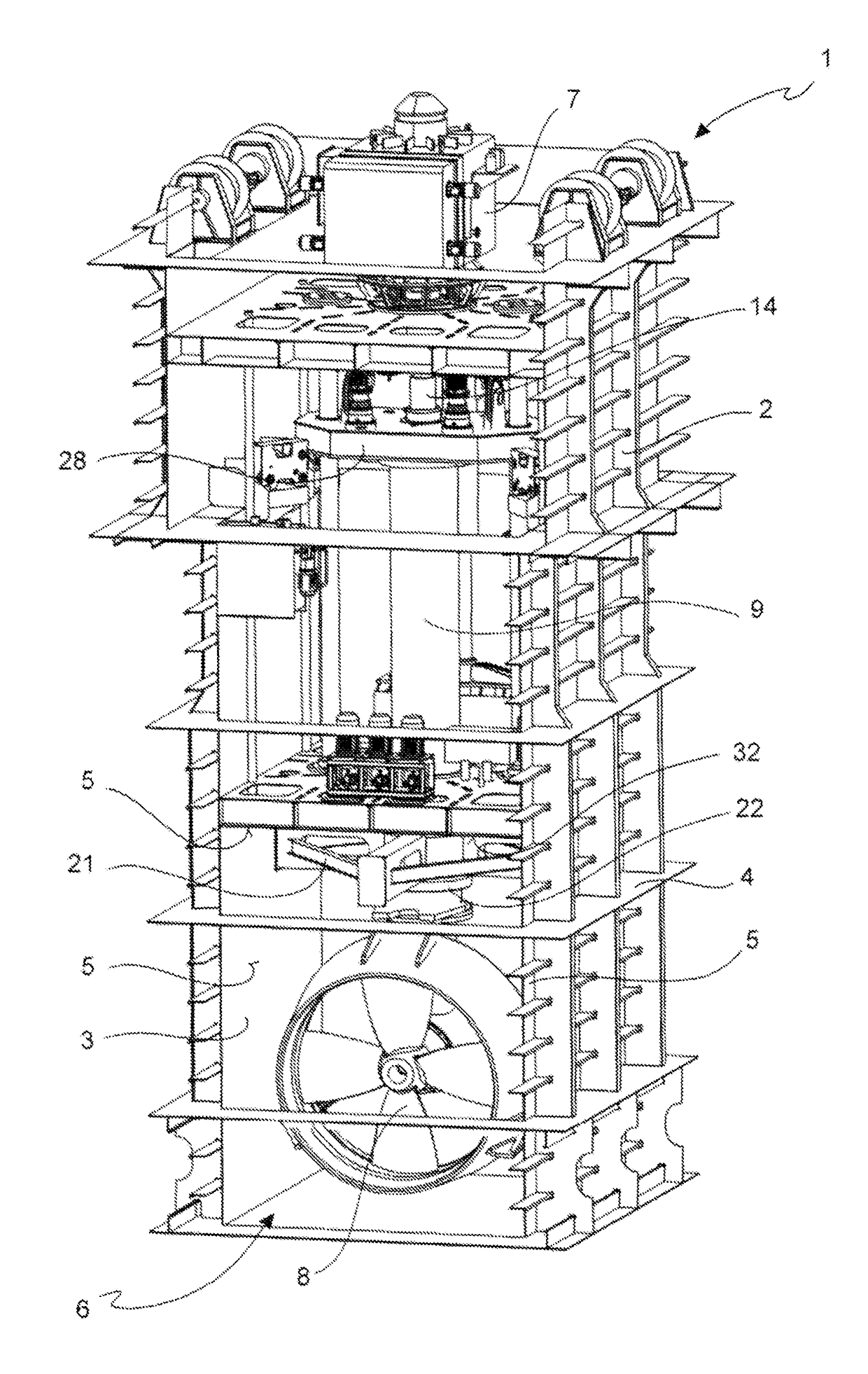Retractable thruster
a technology of thrusters and assembly parts, which is applied in the direction of waterborne vessels, marine propulsion, vessel parts, etc., can solve the problems of unsuitable thrusters inclination with respect to the vertical axis, add additional weight, and bulky and heavy, and achieve the effect of reducing the overall dimension, simplifying the assembly construction, and minimizing the assembly weigh
- Summary
- Abstract
- Description
- Claims
- Application Information
AI Technical Summary
Benefits of technology
Problems solved by technology
Method used
Image
Examples
Embodiment Construction
)
[0049]With reference to the above-mentioned Figures, a propulsion assembly of a ship or floating platform 1 comprises a hull insert 2, also referred to as a trunk, forming a housing 3, also referred to as a propeller case, located within a hull 4 of a ship or platform.
[0050]In accordance with an embodiment, said housing 3 is a housing watertight with respect to the hull in all the walls 5 thereof, except for an opening 6 opening externally to the hull 4 of the ship or platform.
[0051]Advantageously, said assembly further comprises a motor 7 and a thruster 8, for example a propeller foot.
[0052]In accordance with an embodiment, said thruster 8 is suitable to be arranged externally to said hull 4 to generate a propulsion thrust on said ship or floating platform. Said thruster 8 is further retractable within said housing 3 passing through said opening 6.
[0053]In accordance with an embodiment, said motor 7 is arranged in said hull 4, but externally to said housing 3, and it is arranged s...
PUM
 Login to View More
Login to View More Abstract
Description
Claims
Application Information
 Login to View More
Login to View More - R&D
- Intellectual Property
- Life Sciences
- Materials
- Tech Scout
- Unparalleled Data Quality
- Higher Quality Content
- 60% Fewer Hallucinations
Browse by: Latest US Patents, China's latest patents, Technical Efficacy Thesaurus, Application Domain, Technology Topic, Popular Technical Reports.
© 2025 PatSnap. All rights reserved.Legal|Privacy policy|Modern Slavery Act Transparency Statement|Sitemap|About US| Contact US: help@patsnap.com



